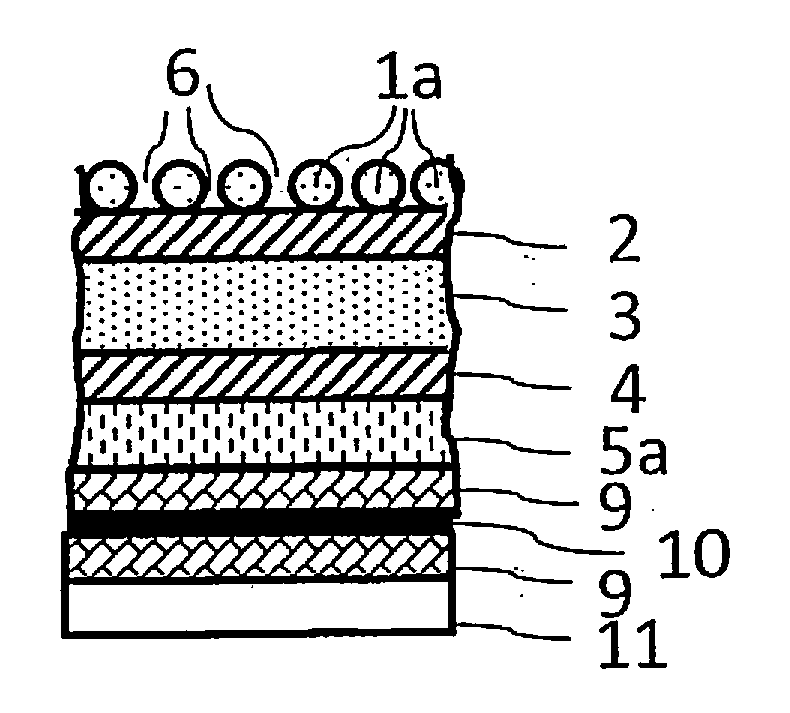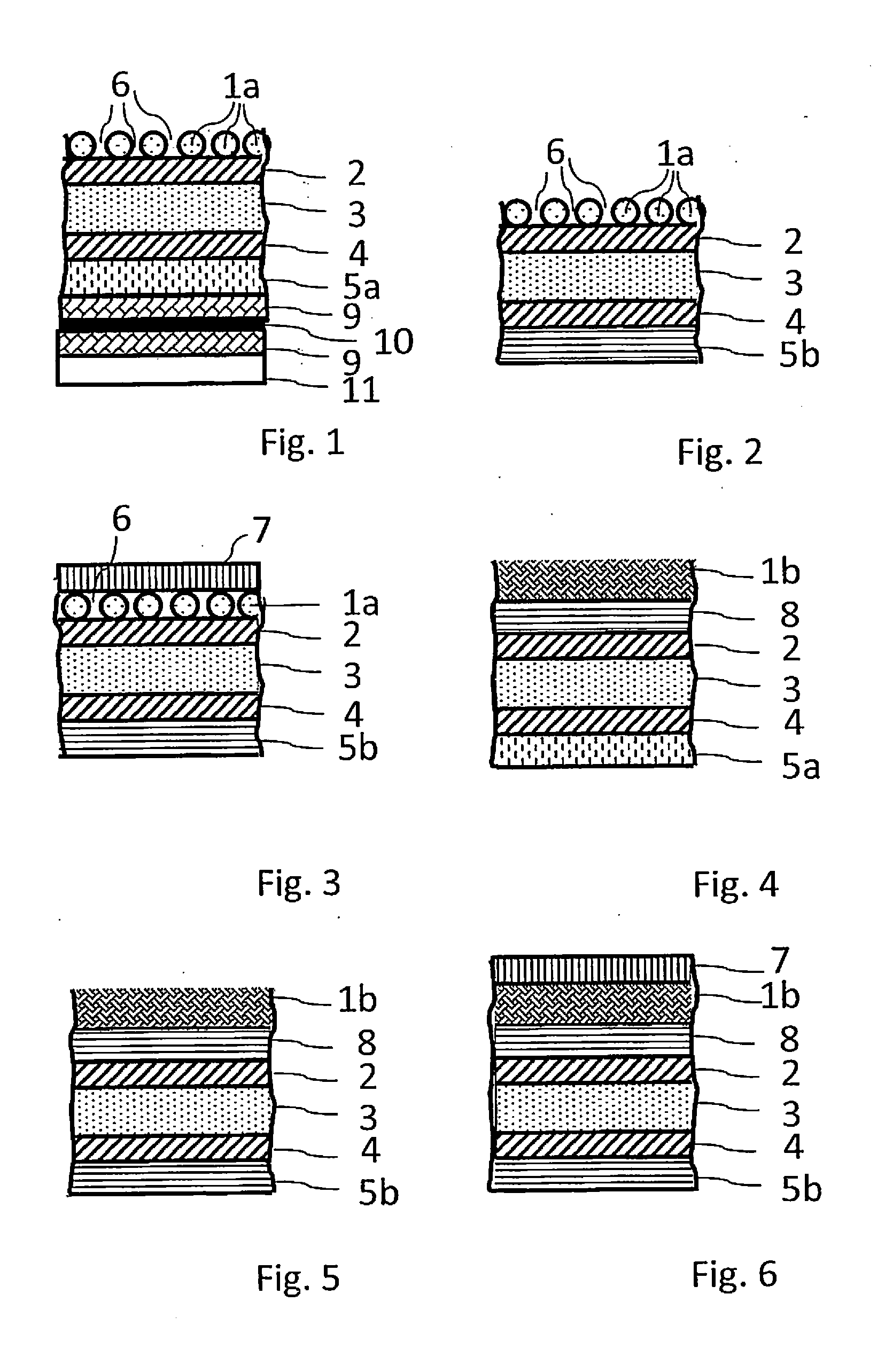Solar module rear side encapsulation element and solar module
a solar module and encapsulation element technology, applied in photovoltaics, electrical equipment, applications, etc., can solve the problems of increased uv exposure, limited suitability of solar modules for desert use, and inability to protect solar modules sufficiently long, so as to achieve more cost-effective effects
- Summary
- Abstract
- Description
- Claims
- Application Information
AI Technical Summary
Benefits of technology
Problems solved by technology
Method used
Image
Examples
first embodiment
[0038]FIG. 1 shows a schematic and non-scaled partial cross-sectional view of a solar module having a solar module rear side encapsulation element according to a The solar module has a front side encapsulation element 11, the front side thereof being a light-incident side of the solar module and an encapsulation material 9 being arranged on the rear side thereof. Furthermore, the solar module comprises solar cell strings 10 arranged on the rear side of the front side encapsulation element 11 that are connected to each other and embedded in the encapsulation material 9 so that both the side of the solar cell string 10 facing to the front side encapsulation element 11 and the side of the solar cell string 10 facing away from the front side encapsulation element 11 are surrounded by the encapsulation material 9. Furthermore, the solar module has a solar module rear side encapsulation element arranged on the side of the solar cell string 10 facing away from the front side encapsulation...
second embodiment
[0040]FIG. 2 shows a schematic and non-scaled partial cross-sectional view of a solar module rear side encapsulation element according to a The solar module rear side encapsulation element shown in FIG. 2 corresponds to the solar module rear side encapsulation element shown in FIG. 1 with the difference that it comprises a more cost-efficient polyolefin film 5b made of polyethylene instead of the polyvinyl fluoride film 5a.
third embodiment
[0041]FIG. 3 shows a schematic and non-scaled partial cross-sectional view of a solar module rear side encapsulation element according to a The solar module rear side encapsulation element shown in FIG. 3 corresponds to the solar module rear side encapsulation element shown in FIG. 2 with the difference that the protective layer 1a is laminated. A polymer foil 7 is arranged on the protective layer 1a so that the polymer foil 7 is the outer face of the rear side encapsulation element and the solar module not shown completely. Alternatively, the outermost layer can be also formed as sacrificial layer made of a non-polymeric and non-metallic material.
PUM
| Property | Measurement | Unit |
|---|---|---|
| Fraction | aaaaa | aaaaa |
| Fraction | aaaaa | aaaaa |
| Fraction | aaaaa | aaaaa |
Abstract
Description
Claims
Application Information
 Login to View More
Login to View More - R&D
- Intellectual Property
- Life Sciences
- Materials
- Tech Scout
- Unparalleled Data Quality
- Higher Quality Content
- 60% Fewer Hallucinations
Browse by: Latest US Patents, China's latest patents, Technical Efficacy Thesaurus, Application Domain, Technology Topic, Popular Technical Reports.
© 2025 PatSnap. All rights reserved.Legal|Privacy policy|Modern Slavery Act Transparency Statement|Sitemap|About US| Contact US: help@patsnap.com


